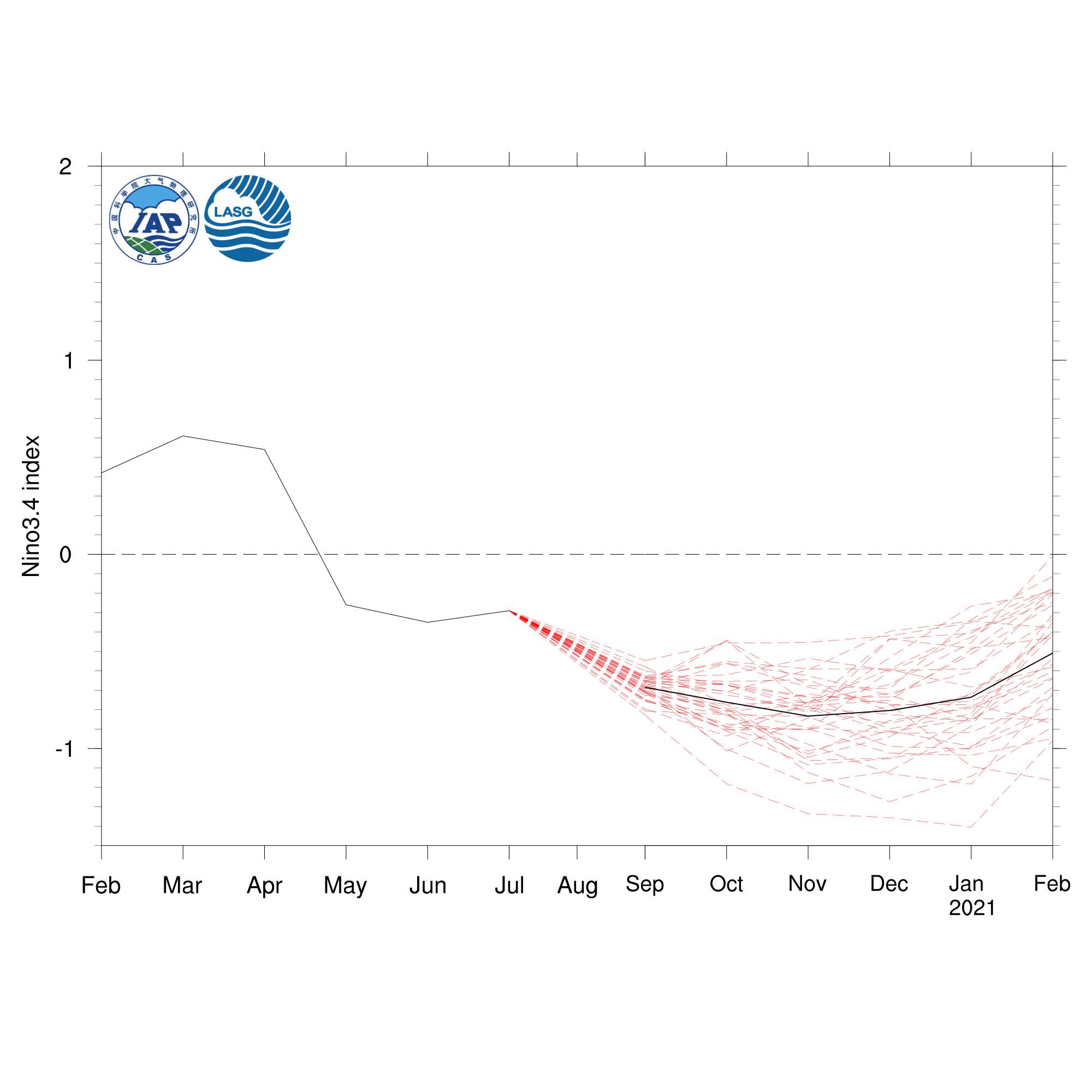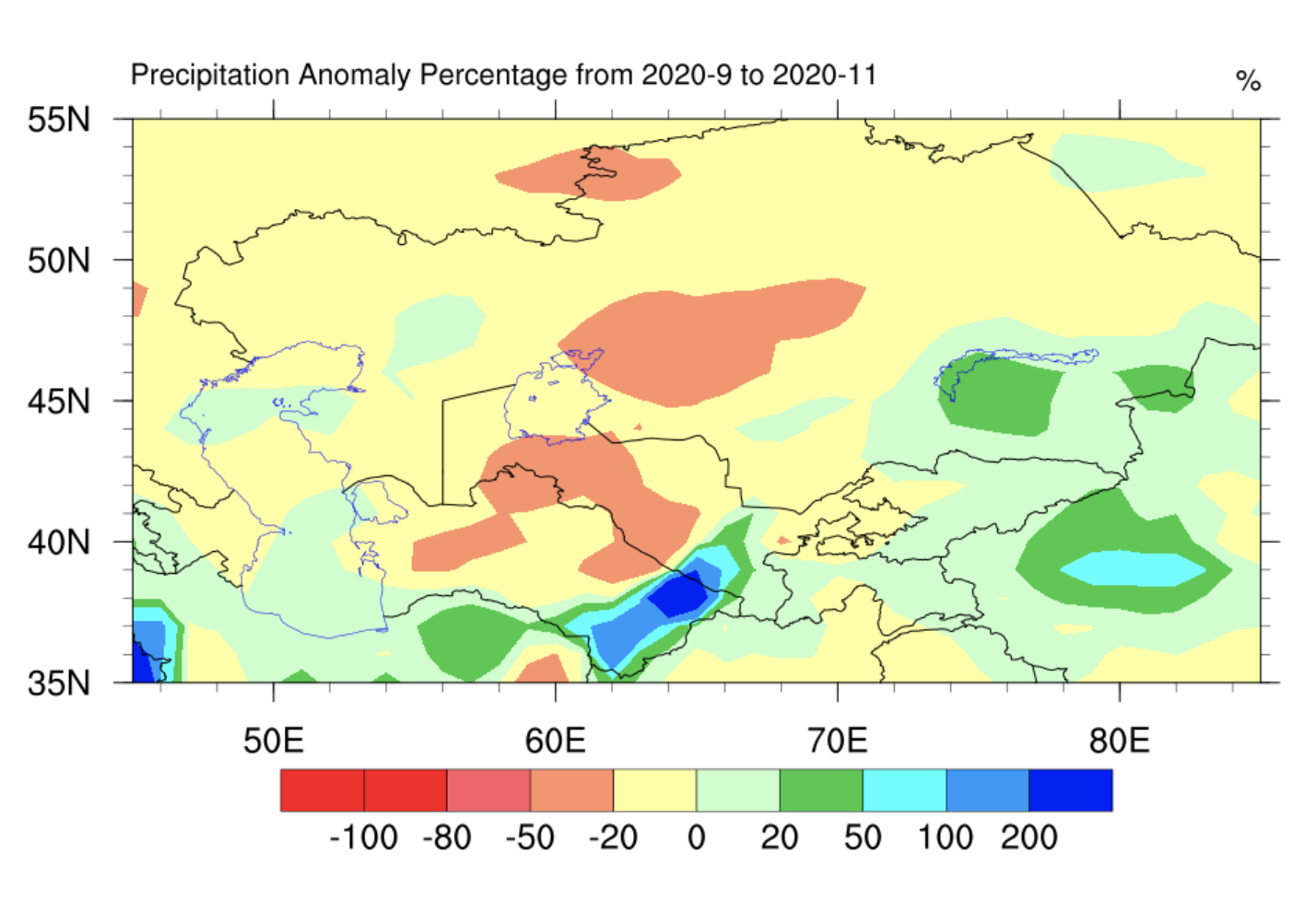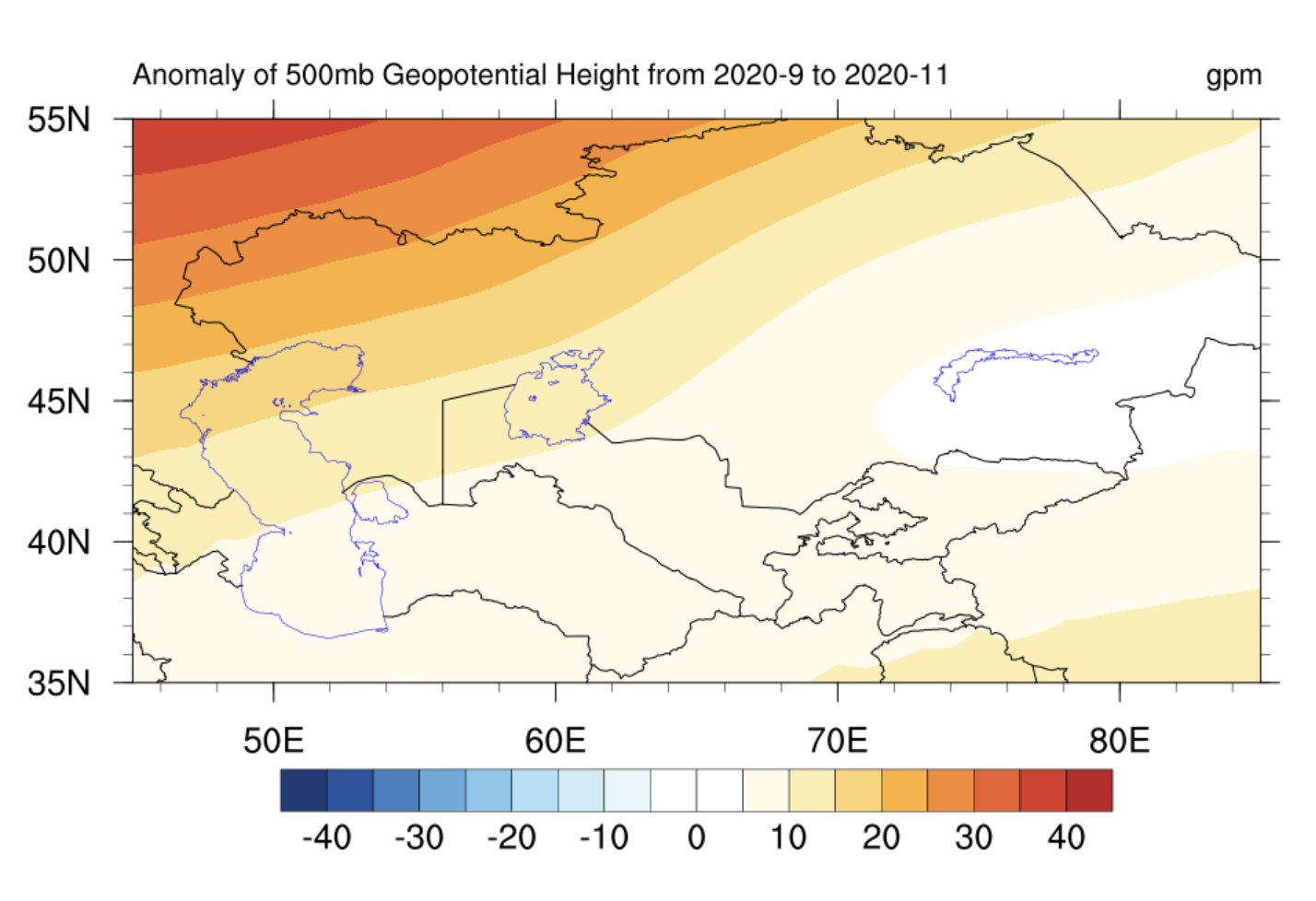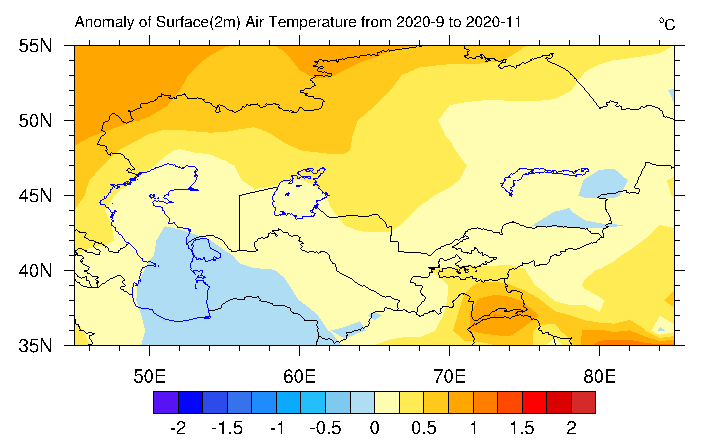Figure 1. The ANSO-MISSPAD seasonal prediction suggests cooling in the central tropical Pacific towards a weak La Nina event. La Nina events typically reduce autumn rainfall in Central Asia.
1. Less rainfall is predicted in most Central Asia, while some part of the eastern Central Asia may have slightly more precipitation.
The seasonal forecast was updated in August 2020. It indicates that the sea surface temperature (SST) anomaly in the central and eastern equatorial Pacific will drop to negative in the autumn of 2020 (September, October, and November), leading to a weak La Nina episode (Figure 1). According to the empirical statistical relationship, La Nina events usually result in less autumn precipitation in Central Asia. This statistical relationship is confirmed by the numerical model simulation, which shows less-than-normal precipitation in Central Asia (Figure 2).
Figure 2. The autumn (SON) precipitation anomaly percentage (%) predicted by the FGOALS-f2 Sub-seasonal-to-Seasonal Prediction System of ANSO MISSPAD for the autumn of 2020.
According to the latest seasonal forecast, the Central Asian region will have less precipitation in the autumn of 2020 (September, October, and November), mainly in Kazakhstan, Uzbekistan, and Turkmenistan. The percentage of precipitation anomaly in this region reaches -20%, indicating a shortage of water resources in this region. This shortage of precipitation mainly occurs in early autumn (mainly in September).
The lack of precipitation in Central Asia is related to the intensified high-pressure ridge of the middle latitude westerly circulation (Figure 3). The 500hPa geopotential height has a positive anomaly center over the Ural Mountains, conducive to the formation of sinking anomalies in Central Asia. The low-level easterly anomaly on the west side of the Pamirs Plateau tends to cause airflow divergence of the westerly belt, which leads to a decrease in precipitation.
Figure 3. The autumn (SON) 500hPa geopotential height anomaly (units: gpm) predicted by the FGOALS-f2 Sub-seasonal-to-seasonal Prediction System of ANSO MISSPAD for the autumn of 2020.
Central Asia's eastern and southern regions have slightly more precipitation, especially in the eastern areas of Turkmenistan and Uzbekistan. This region is characterized by complex topography and great height variation. Therefore, attention should be paid to preventing geological disasters such as floods, landslides, and mudslides in these regions.
2. The overall autumn temperature is slightly higher than normal, while warmer in early autumn and colder in late autumn.
According to the ANSO MISSPAD S2S prediction system, the overall autumn temperature in Central Asia will be slightly higher than normal. In northern Kazakhstan, the autumn temperature will be 0.5 to 1.0 ℃ higher than normal. In early autumn (September), the temperature in most areas was about 0.5~1.0℃ higher than usual. While in late autumn (November), the temperature in Central Asia will be about 0.5~1.0℃ lower than usual. The temperature in October was close to usual.
Figure 4. The autumn (SON) temperature anomaly percentage (℃) predicted by the FGOALS-f2 Sub-seasonal-to-Seasonal Prediction System of ANSO-MISSPAD for the autumn of 2020.




